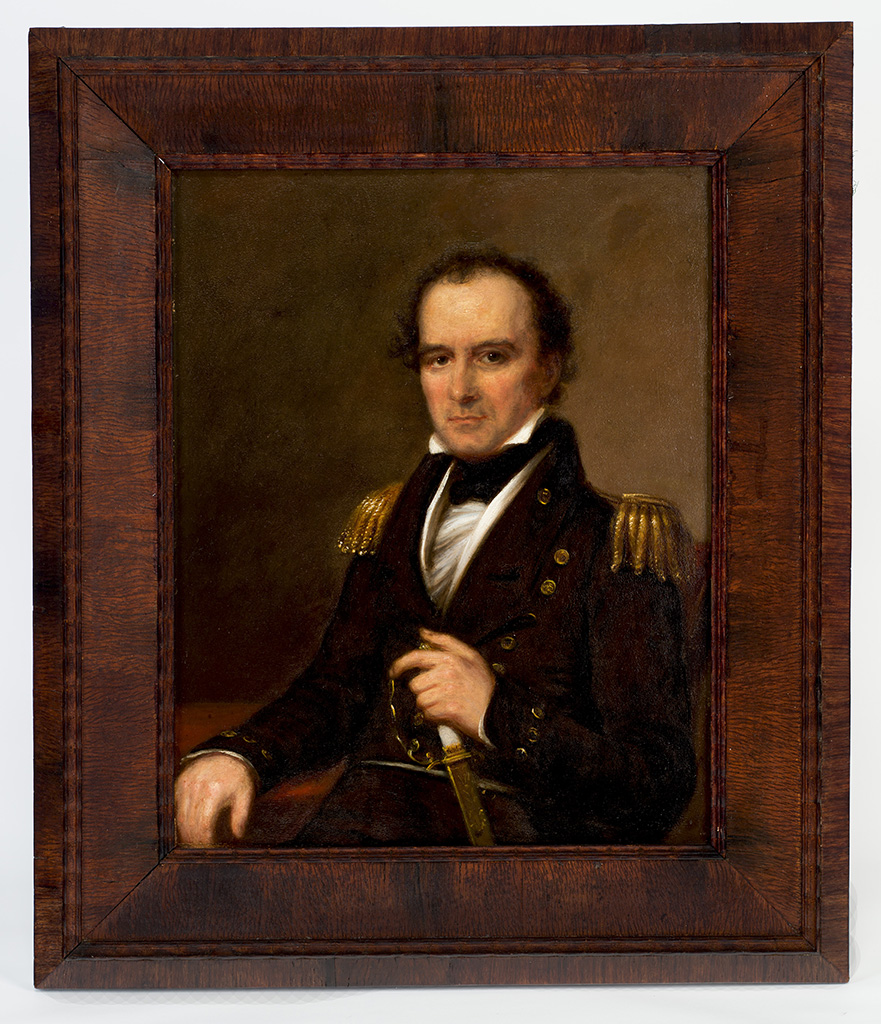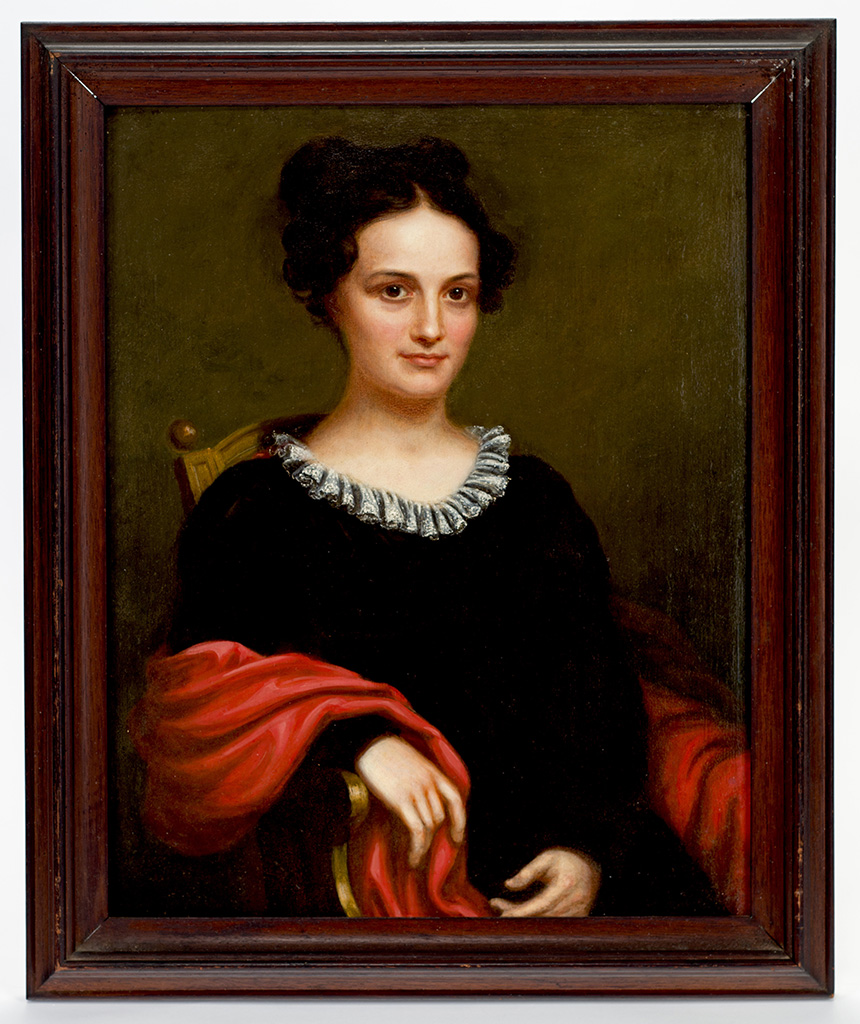Once again, the USS Constitution Museum is able to put a face to an historical name. And in this case, it is a name with quite a pedigree. In 2014 the Museum acquired from descendants of the sitters two wonderful portraits of Alexander Scammel Wadsworth and his wife, Louisa Denison.

At the age of only fourteen, Alexander received his midshipman’s appointment in the U.S. Navy. He joined his brother Henry (five years his elder) as part of the fighting force sent to the Mediterranean to rein in the attacks of the Barbary States of North Africa. Poor Henry, “ardent for some desperate glory,” volunteered to accompany Master Commandant Richard Somers on an ill-fated mission to blow up targets in Tripoli Harbor. Sadly, something went wrong, the “infernal” exploded prematurely, and the entire crew died a fiery death.
Incidentally, Alexander’s sister Zilpah married Stephan Longfellow in 1804. Their son Henry was born in 1807 and named for the naval hero. Henry Wadsworth Longfellow, Alexander’s nephew, became a far-famed American poet and educator.
The untimely death of Alexander’s brother did little to cool his ardor, and he continued to serve in the navy. He was promoted to lieutenant in April 1810 and by August 1812 had become USS Constitution’s second lieutenant. Arriving back in Boston after the ship’s defeat of HMS Guerriere, he wrote in a letter to his sister’s husband that they had “destroyed H.B.M. Ship Guerriere, a famous fellow who has been bragging and making a great noise on the coast for two or three years and who has been a very great annoyance to our trade…”
His adventures didn’t stop there. Serving as first lieutenant under Charles Morris on board the sloop of war Adams, he sailed twice across the Atlantic, leaving a trail of captured British ships in his wake. At last, Adams was cornered in the Penobscot River in Maine by a British squadron. With escape impossible, the ship’s crew set the ship ablaze and escaped overland.
The end of the war hardly brought peace. Alexander was soon off again to the Mediterranean where he commanded the brig Prometheus during the Second Barbary War, followed by two cruises to the West Indies to help suppress piracy in those waters.
In 1824, Alexander married Louisa J. Denison in Washington, D.C. Louisa was the sister-in-law to Commodore John Rodgers (the sister of his wife, Minerva), who was one of the most senior and influential officers in the service. She was six years his junior, and had spent her youth on her family’s estate in Maryland.
Alexander finally secured his coveted promotion to captain in March 1825, and he soon sailed for the Mediterranean again, this time in command of the frigate Constellation. A stint as commodore of the Pacific Squadron followed, and then came a succession of desk jobs, first as a member of the Navy Board and then Inspector of Ordnance.
Besides his talents as a fighter and a diplomat, Alexander was a talented cartographer. Among other jobs, he surveyed Narragansett Bay with a certain Lieutenant Charles Wilkes in 1832. Wilkes later went on to command the famous U.S. Exploring Expedition of 1838 to 1842, the so-called “Wilkes’ Expedition.”
Alexander died on April 5, 1851 and was buried at the Congressional Cemetery in Washington, D.C. Louisa outlived him by only six years.

Judging by what we know of his service history, as well as their clothing, the portraits were probably painted sometime between March 1825, when Alexander received his promotion to captain, and 1829, when he left on a Mediterranean cruise in command of USS Constellation. Neither work features the signature of the artist, although Alexander’s portrait appears to bear the name “Charlotte Brown” (or Braun) on the back of the panel. The Maine Historical Society has in its collection a similar coat attributed to Wadsworth, though likely not the same coat worn in this portrait.
The two portraits have been cleaned, and what was once dingy and dark, is now luminous. Alexander’s epaulets, buttons, and sword hilt sparkle, and Louisa is justifiably proud of her fine “Turkey red” shawl.
Alexander’s frame is made of wood from Constitution. Interestingly, in 1833, just as Constitution entered Dry Dock 1 in the Boston Navy Yard for a major refit, the Navy Board of Commissioners in Washington requested that “some pieces of the original frame” from the ship be sent to the department. This timber would be used to make picture frames for portraits in the commissioner’s office.1 Wadsworth served as a Navy Commissioner in 1837. Could his frame have come from the same batch of wood?
1 Thanks to Margherita M. Desy, USS Constitution historian at Naval History & Heritage Command Detachment Boston, for this reference.
The Author(s)
Matthew Brenckle
Research Historian, USS Constitution Museum
Matthew Brenckle was the Research Historian at the USS Constitution Museum from 2006 to 2016.